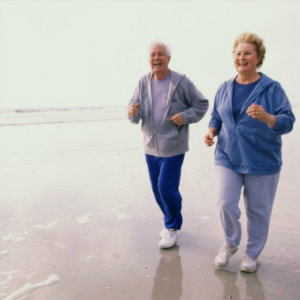Vowing to begin an exercise routine is one of the most common New Year’s resolutions. It helps to control weight; reduces blood pressure and cholesterol levels and risks of multiple diseases; and strengthens muscles, tendons and bones. If you are new to exercise or are returning to it after a break in the routine, here are tips to ease you into a schedule of physical activity.
The National Institute of Health: Senior Health shares that the majority of older adults do just fine when increasing their participation in physical activity, at least to a moderate level, but also cautions it’s best to start out slowly. They provide a fairly extensive list of conditions that indicate you should check with your doctor before starting the exercise program. You can read the article for this list—or decide to check, regardless. Ask your doctor where your activity level should be and if there are any specific activities that he or she does or doesn’t recommend for you. Also discuss how you should warm up and what you should do to help avoid injury.
Elements of a Balanced Exercise Program
Healthline.com lists these elements, which include aerobic exercise that increases your heart rate and your endurance. This kind of exercise is often called “cardio.” Within six weeks, this can make a noticeable difference in daily activities. Exercises that are good for beginners include walking, swimming, cycling and water aerobics. If you enjoy dancing, that can be an aerobic activity, as is tai chi and similar disciplines. The Centers for Disease Control and Prevention (CDC) suggests that people aged 65 and up should get at least 150 minutes of moderate-intensity aerobic exercise weekly.
Strength training is also important, and the CDC recommends twice-weekly workouts, at least, for people 65 and up. You can start by lifting light dumbbells and doing lunges, modified pushups and squats. Exercises that aid in balance and flexibility are also important—and yoga fits the bill for both.
Exercising can greatly improve quality of life and even extend it, and a good level of fitness can be achieved in as little as 30 minutes per day. The CDC provides more insight into what are appropriate aerobic and strengthening exercise for older adults, found here. Additional resources have been provided by MedlinePlus.gov.
Motivation
You may initially have great enthusiasm for your exercise program, but then struggle to stay motivated. If so, don’t panic. That’s not unusual, and the National Institute of Health offers tips on how to keep that enthusiasm alive. They include choosing activities that you find fun and fit into your schedule. Picks ones that you can do safely, that are within your budget —and, as a bonus, ones that can include friends and family. It’s also important to set reasonable goals. Otherwise, disappointment can step in. Celebrate your accomplishments and notice when your exercise program helps in daily living.













